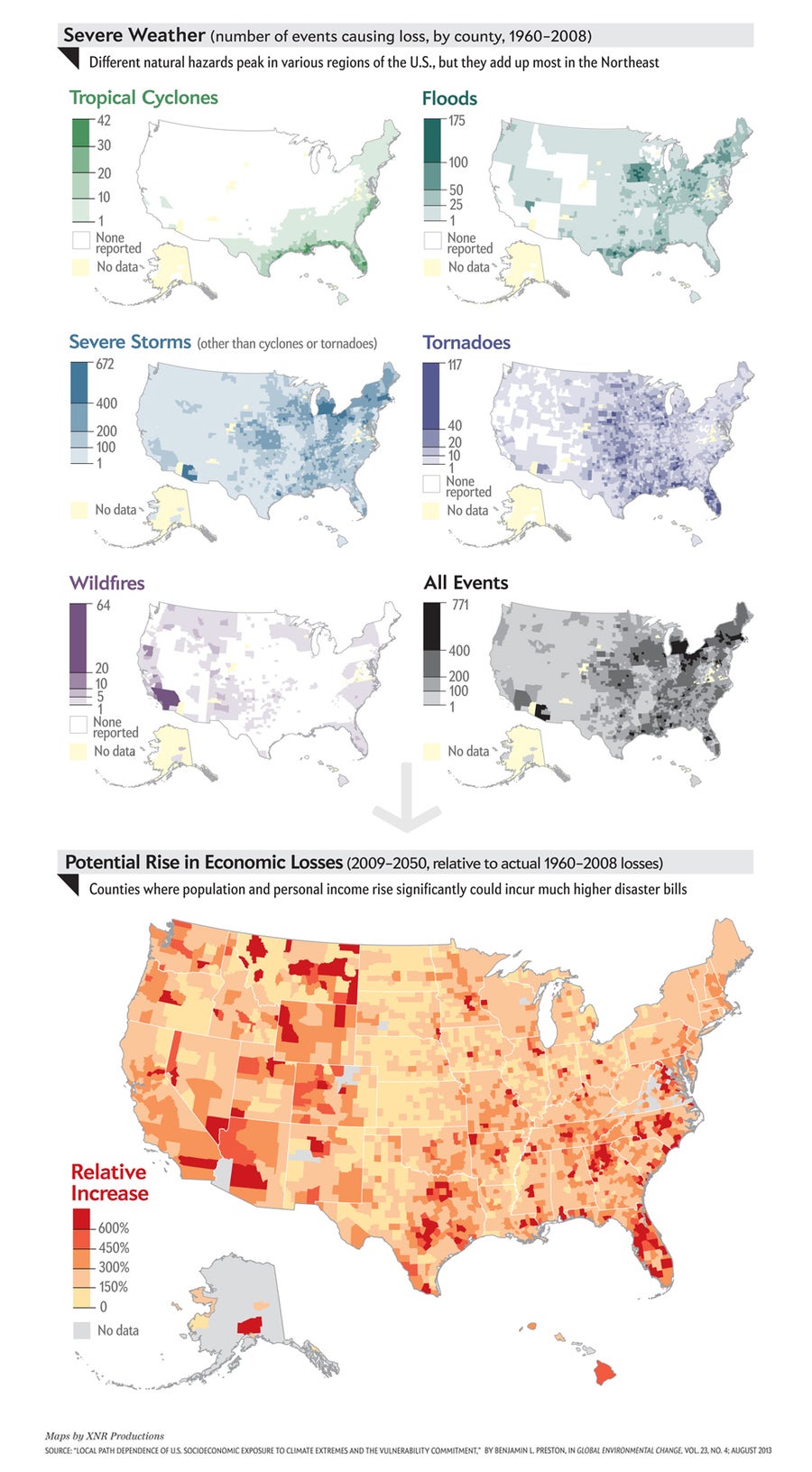Extreme weather could cause four times as much economic loss in the U.S. by 2050 as it does today—without any increase in the frequency or intensity of hurricanes, tornadoes or lightning. That is because the population will be larger and richer and because more Americans are moving to the Eastern seaboard, the Gulf Coast and other storm-ridden places.
The frequency of natural hazards varies across the country (top), but nationwide, average annual losses from all of them over the past 50 years amounted to $10 billion to $13 billion (not including business disruption). By 2050 the price tag will double in many counties, and in some it will swell by four or six times or more (bottom), according to Benjamin L. Preston, deputy director of the Climate Change Science Institute at Oak Ridge National Laboratory. The highest increases will be driven mostly by rising population. If society is concerned about future risk, Preston says, it has to pay closer attention to where people are migrating.

On supporting science journalism
If you're enjoying this article, consider supporting our award-winning journalism by subscribing. By purchasing a subscription you are helping to ensure the future of impactful stories about the discoveries and ideas shaping our world today.
SCIENTIFIC AMERICAN ONLINE
To see where population has grown most, go to ScientificAmerican.com/aug2013/graphic-science